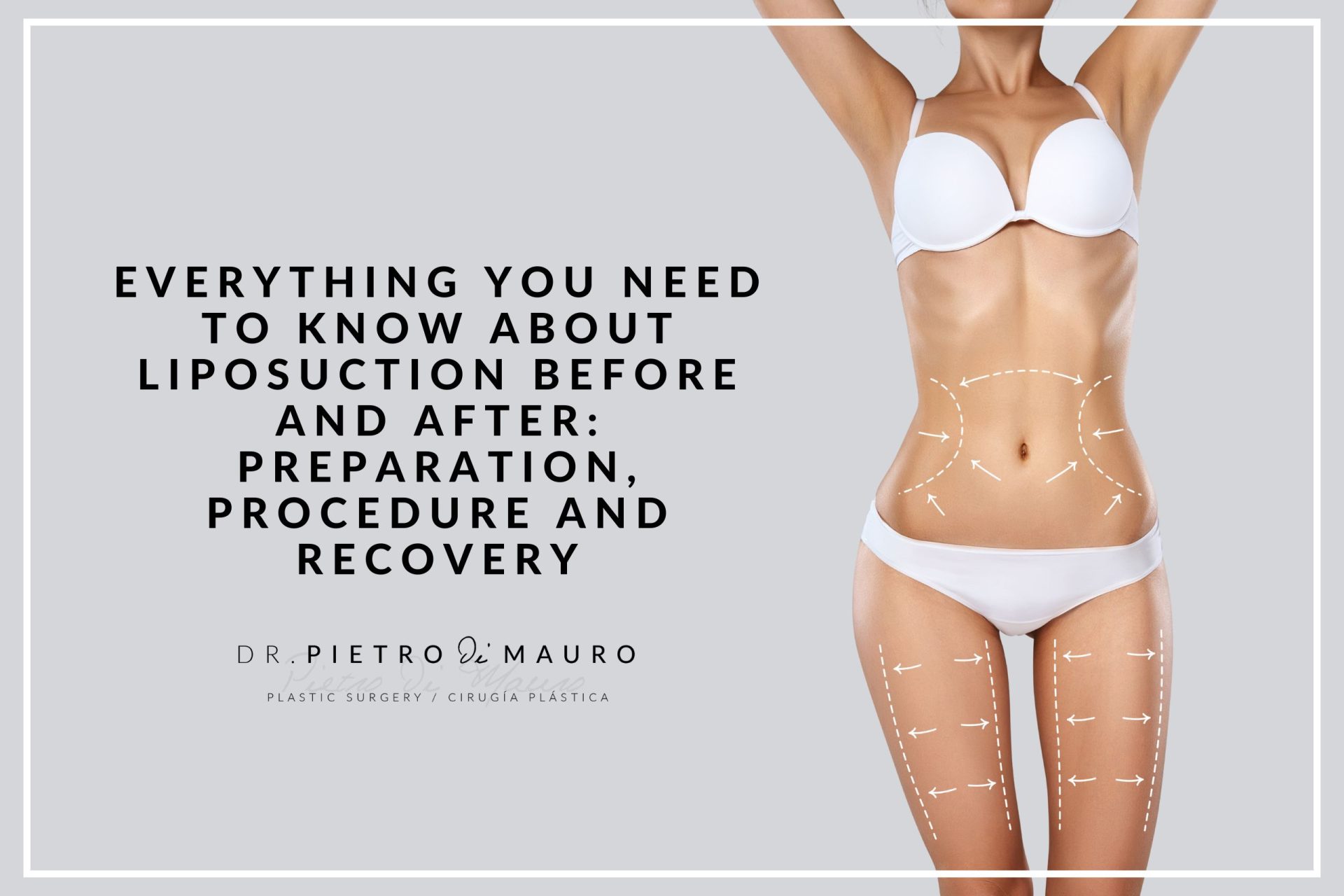Liposuction, sometimes referred to as lipo, is an invasive cosmetic surgery procedure designed to create smoother contours and more refined silhouette, by removing stubborn pockets of excess fat from specific areas of the body. The process has evolved since it was initially introduced in the 1970s, and over the years it has become increasingly popular, as, as a way to enhance the figure and boost confidence.
Different method of liposuction
There are various methods of liposuction, including traditional, tumescent and vaser liposuction, which is the most popular method used by Dr di Mauro. This is because the process can be more targeted, thereby preventing damage to the surrounding tissue, which means less trauma and quicker recovery.
How It Works
Traditional liposuction is carried out using a small tube called a cannula under the skin to remove fat from the targeted area. Small incisions are required to insert the cannula in the required area, then the fat cells are sucked out via a vacuum device. Tumescent liposuction involves injecting diluted anaesthetic into the relevant area to make it easier to remove the fat from the swollen site. Alternatively, instead of using liquid, laser-assisted liposuction melts the fat cells with a laser, and ultrasound liposuction uses ultrasound waves. Vaser liposuction is the newest method which also uses ultrasound technology to breakdown the fat prior to removal.
The best areas for liposuction
The first and most important point to understand is that liposuction should not be used to lose excess weight, as we mentioned earlier, it is primarily designed to refine and smooth, by removing small area of fat that seem resistant to exercise and diet. It can be used on most parts of the body, but most commonly on the arms, thighs, abdomen, neck, buttocks and hips.
Ask the right questions
Research is the first step before undergoing any cosmetic surgery procedure in order to answer and questions you may have:
- What is your aesthetic goal?
- Are you expecting a realistic outcome?
- Are you a good candidate for liposuction: mentally and physically?
- Have you found the right surgeon who specialises in liposuction?
- Are you happy with the clinic and the medical team?
- What preparations do you need to take before the surgery?
- Will there be aftercare and a post-operative recovery plan?
- What is the recovery time?
How to prepare for liposuction
Once you have established whether you are a good candidate, you have found the right surgeon and have booked the procedure, you need to prepare for the surgery. The healthier you are before the operation, the quicker your recovery will be. Therefore, the obvious route is to follow a healthy diet and lifestyle, taking a modicum of exercise and getting enough sleep. A healthy regime should also help you drop any excess weight. If you smoke, you are strongly advised to stop smoking or vaping, as both activities reduce the blood flow and can slow healing, whilst increasing the risk on infection. Similarly, there are some medications that should be avoided as they cause bleeding and could slow down the recovery process. And of course, if you are working, it will be necessary to take time off work to recover.
The Vaser liposuction procedure
Here is a summary, in simple terms, of what you can expect to happen during a Vaser Liposuction procedure.
- Step 1: The surgery will be carried out under local anaesthetic to numb the area, which allows the surgeon to speak to the patient and also reduces the recovery times.
- Step 2: A probe will be inserted into a small incision measuring no more than 7mm.
- Step 3. High frequency ultrasound waves will be sent through the fat cells without damaging the surrounding tissue, making it easier to remove the fat and sculpt the patient’s desired contours. The process will take around 2 hours.
- Step 4: Once satisfied that the right amount of fat has been removed the optimum shape has been achieved, the probe will be removed and the incision closed. Compression bandages will be applied to promote rapid healing.
- Step 5: After you have been given the all clear, you can then go home to rest and recover.
Recovery
The recovery time will depend upon many factors, from your general health and fitness prior to the procedure, age, skin elasticity and the amount of fat removed. As a rule of thumb, the larger the area treated and the greater the number of fat cells removed, the longer the healing time. It is essential that you follow your post-operative recovery plan in order to heal quickly, which includes continuing to wear the compression bandages for up to one month. In general, you should be fully recovered within two to three weeks, but you can carry out normal (light activities) after one week.
To summarise, liposuction is a highly popular and effective way to enhance the contours of your body, after you have achieved your ideal weight. To maintain the results, you must follow a healthy diet and lifestyle, otherwise fat cells can return, and sometimes in a different place. As with all cosmetic procedures, it is important to thoroughly research your options, surgeons and to discuss your desired results.
Once you have found a surgeon who specialises in the required field of surgery, the result can improve your physique and dramatically boost your confidence.
If you are considering liposuction, find out more about Dr di Mauro’s expertise in this field of cosmetic surgery by arranging a confidential no-obligation consultation, by calling 648 43 45 93.
Ideally before undergoing liposuction, the patient should be close to their ideal weight as possible. They should also understand that liposuction is not a weight-loss treatment, instead it is a method of removing stubborn areas of fat to create a smoother silhouette. Liposuction is not suitable for anyone who is overweight or without the necessary skin elasticity.
Every patient is unique, with different skin elasticity, levels of health and genes, and as a result heal at different rates. It is usually possible to return to light activity after around 7 days, however the bruising and swelling will remain for a few weeks during which time you will need to wear any compression bandages provided by your surgeon. It can take up to three months for the final results to become visible.
Liposuction is a surgical procedure, and every procedure has risks, such as slow healing, infections, blood clots and complications with anaesthesia. However, these complications are rare when the necessary precautions are taken. Your surgeon will be fully apprised of your medical history and you will be provided with pre-operative instructions to ensure optimum health and recovery time.


